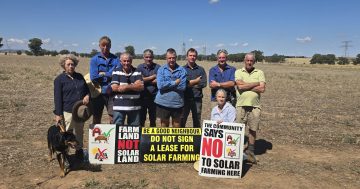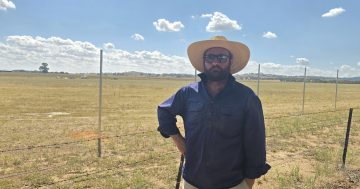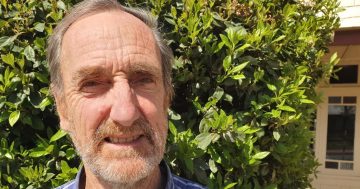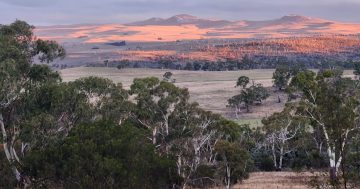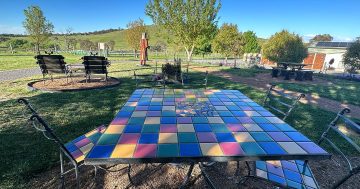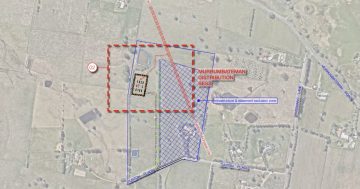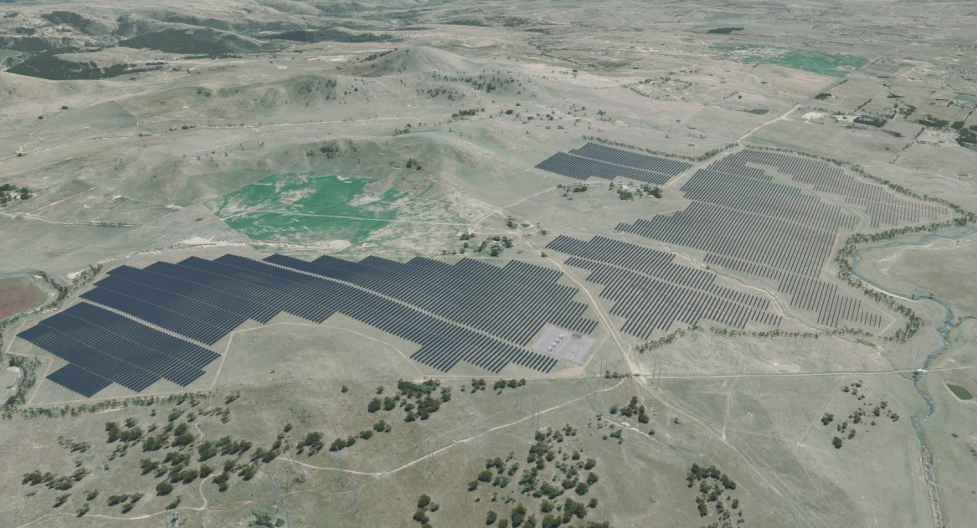
An artist’s impression from 2022 showing the extent of the proposed 100 MW Wallaroo Solar Farm. The array area has been reduced, but the output will be the same. Image: New Energy Development.
Local landholders and residents are mobilising against the proposed solar farm near Wallaroo just across the ACT border ahead of a public meeting on Thursday (18 July).
The NSW Government has been taking more submissions on the state-significant 100 MW proposal on land owned by Canberra’s Notaras family located 3 km south of the rural area of Wallaroo and next to the NSW and ACT border in the Yass Valley.
The development application, which was lodged last year, was referred to the NSW Independent Planning Commission on 28 June to decide on the matter because the Department of Planning, Housing and Infrastructure received at least 50 submissions objecting to the proposal. The Yass Valley Council has also objected.
Submissions opened on 1 July and they close at 5 pm on Thursday, 25 July 2024.
The commission has organised the public meeting in the Murrumbateman Community Hall for Thursday, 18 July, starting at 10 am.
The proposal from New Energy Development and Univergy International will involve the installation of 182,000 photovoltaic modules on steel piles and associated infrastructure, including battery storage and a substation connected to nearby transmission lines.
The proponents, who will lease the land, say the $166 million project will feed electricity into the transmission network and be capable of producing enough clean renewable energy to supply about 48,000 homes in NSW and the ACT.
But nearby residents and landholders say it will be an eyesore and impact the rural character of the area and the environment, as well as pose noise, dust and pollution risks.
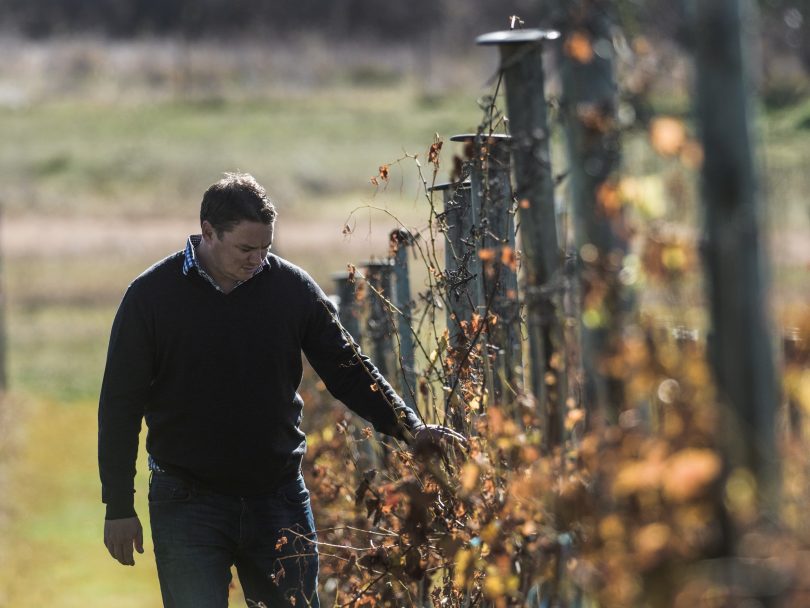
Nick O’Leary is worried about the future of his business and the growing tourism sector in the area. Photo: Nick O’Leary Wines.
Neighbouring award-winning Nick O’Leary Wines said in a submission lodged last year that it feared the proposal would threaten the viability and value of its vineyard and new cellar door.
The winemaker has 14 hectares of vines, a 500-tonne winery and a Cellar Door Restaurant, all of which employ more than 30 people.
Mr O’Leary told Region that he supported renewable energy and that the winery itself, as an environmentally friendly operation, had 700 sqm of solar panels on the buildings, but this site was just not appropriate for a project of this size.
He was also concerned about the impact on local tourism, saying that since opening the new cellar door and restaurant 12 months ago, the winery had had more than 20,000 visitors.
“We see it as a destination, not just our winery. There are three other cellar door and restaurant businesses out here, so we’re concerned about what 750 football fields [of solar panels] will look like as you’re coming out on a nice drive to the country to visit wineries,” he said.
Mr O’Leary said he had made a significant investment in the business and was extremely worried about its future if this development was approved.
He said the proposal was inconsistent with NSW’s own planning rules that such a project should not be built within 5 km of a major suburb and town.
“The NSW Government is bullying their way through and the ACT Government has been very quiet. It’s going to affect 10,000 residents.”
He said it would be very sad to see prime agricultural land turned over to a massive industrial solar farm.
Mr O’Leary will join other objectors at the Murrumbateman meeting.
Kane Mangin shared on the WhatsApp group set up to fight the proposal that the only local beneficiary of the project would be the land owner, but the community would be left to deal with the negative impacts of the development, including falling land values and increased risks and hazards to people, flora and fauna.
Mr Mangin, who intends making a submission to the commission, said conditions imposed by DPHI to mitigate risks did not address the fundamental concerns of the objectors.
“The mitigations include paying offset credits for the impact on a significant threatened and endangered species. This is a cop-out and does not address the biodiversity and environmental hazard that this development represents,” Mr Mangin said.
“Additionally, the dust, noise and pollution impact on residents will be significant. All weather comes from the west and no amount of mitigation by the developer will address the discomfort and stress.”

Nick O’Leary said the proposal was inconsistent with NSW’s own planning rules that such a project should not be built within 5 km of a major suburb and town. Image: NGH.
Mr Mangin said NSW regulations prohibited these developments encroaching on regional centres, but this development is within 800 metres of densely populated suburbs of the ACT, separated only by an invisible border.
ACT resident Adam Bartley also raised this point in his submission made this week, saying the proponents are exploiting a loophole.
“There are many good reasons for this, including the visual impact of reflective panels, localised temperature increases near solar farms, increased dust and noise during construction and bush fire risks posed by the electrical equipment,” he said.
NSW resident and neighbour Rachael McCarroll said the impact on the view would devalue her property.
“It is very disheartening to think that we will be potentially looking at black panels instead of green hills, which was the intention when we purchased the land to build our forever home,” she said.
Yass Valley Council said in its submission made last year that the site is within the nominal 5 km ‘buffer’ area around the ACT/NSW border established by the Yass Valley Settlement Strategy and supported by both the ACT and NSW planners.
This buffer is designed to preserve the rural amenity and landscape values and restrict urban development in these areas.
“A solar farm is more akin to an industrial activity and is inconsistent with protecting the landscape values of the locality and the rural character and amenity as envisaged in the buffer area along the border of Yass Valley and the ACT,” the council said.
It has concerns about the potential contamination of agricultural and residential areas and waterways from the ignition of cadmium storage batteries and panels in the event of a grassfire.
It also says that the proponents have not considered the Parkwood and Ginninderry developments in their visual impact assessment.
The proponents said in their November 2023 response to submissions that a vegetation buffer will screen the project and allow it to blend in with the landscape and minimise glare.
While it will be visible from certain points, they say the solar farm will only have a low visual impact, but this has been further enhanced by changes made to the project in May this year.
Tree plantings will be shifted to fragment the view from the northwest, and the solar array area has been reduced from 179.94 ha to 139.19 ha, although this will not mean a fall in output.
Minor changes to operational PV tracking controls will also help reduce any glare from panels.
The proponents said the project is not in a water-sensitive area or near groundwater, remains consistent with ecologically sustainable development and is in the public interest.
Original Article published by Ian Bushnell on Riotact.







